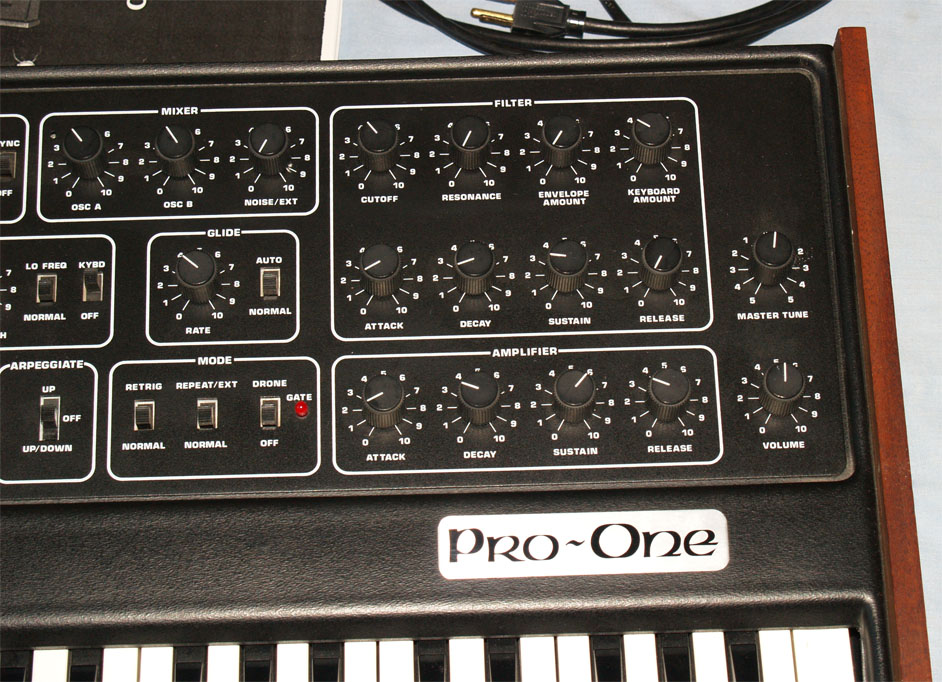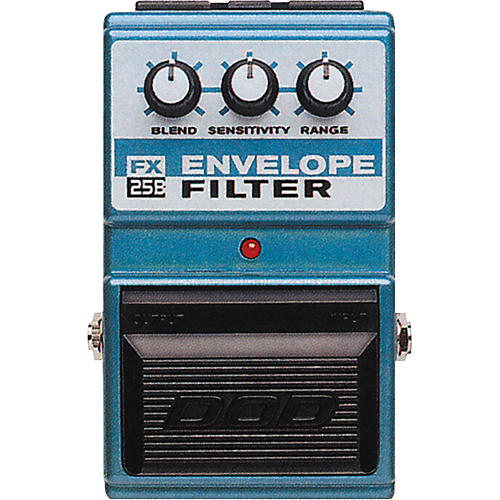Can Someone Help Me Identify this Effect?
Moderator: Dave Mudgett
- Gus Callaway
- Posts: 27
- Joined: 3 Jun 2018 8:18 am
- Location: California, USA
- Contact:
Can Someone Help Me Identify this Effect?
https://youtu.be/w9XDUBDMNuk?t=29
Bela is using it on his banjo, it kind of sounds like a wah pedal but he isn't using one. Perhaps it is due to the instrument's unique tone, but if it is an effect, I feel like if I had a name for it I may be able to find something similar for my pedal steel.
Thanks!
Bela is using it on his banjo, it kind of sounds like a wah pedal but he isn't using one. Perhaps it is due to the instrument's unique tone, but if it is an effect, I feel like if I had a name for it I may be able to find something similar for my pedal steel.
Thanks!
- Jerry Overstreet
- Posts: 13910
- Joined: 11 Jul 2000 12:01 am
- Location: Louisville Ky
I would guess that control on his instrument at :44 is a midi connection like the 13 pin/midi pickup that Roland uses and is routed to a synth in his rack. I didn't watch it all the way through, but that'd be my take. As to what effects chain or program he might have been using, it could be any number of things.
The Flecktones were pretty heavy into progressive and/or out of the box stuff then.
The Flecktones were pretty heavy into progressive and/or out of the box stuff then.
- Jon Light (deceased)
- Posts: 14336
- Joined: 4 Aug 1998 11:00 pm
- Location: Saugerties, NY
- Contact:
-
Brett Lanier
- Posts: 1839
- Joined: 9 Sep 2009 3:47 pm
- Location: Hermitage, TN
- Contact:
Yup, envelope filter.
A good example is from Witches Brew off this live record

There are a lot of different brands to choose from. A vintage Mutron 3 will be very expensive. i think Buddy used an MXR.
There is a reissue version of the mutron now which is probably worth buying. https://www.mu-tron.com/products/micro- ... ssic-blue/
A good example is from Witches Brew off this live record

There are a lot of different brands to choose from. A vintage Mutron 3 will be very expensive. i think Buddy used an MXR.
There is a reissue version of the mutron now which is probably worth buying. https://www.mu-tron.com/products/micro- ... ssic-blue/
- Gus Callaway
- Posts: 27
- Joined: 3 Jun 2018 8:18 am
- Location: California, USA
- Contact:
- Godfrey Arthur
- Posts: 2986
- Joined: 12 Dec 2012 5:46 pm
- Location: 3rd Rock
Sounds like an auto wah.
Here's a comparison of an auto wah and an envelope filter.
https://www.youtube.com/watch?v=xz2T8U37PQk
Here's a comparison of an auto wah and an envelope filter.
https://www.youtube.com/watch?v=xz2T8U37PQk
ShoBud The Pro 1
YES it's my REAL NAME!
Ezekiel 33:7
YES it's my REAL NAME!
Ezekiel 33:7
- George Redmon
- Posts: 3547
- Joined: 8 Apr 2005 12:01 am
- Location: Muskegon & Detroit Michigan.
They are both different, yet also alike. What makes the envelope follower (filter) unique is the envelope follower (filter) itself and how it responds to your playing. Plus, unlike an auto wah, it always starts the sweep in the same place and sweeps up (or down) from there with each note, giving a percussive effect. And, indeed, it is synonymous with Jerry Garcia, Bootsy Collins, etc. I currently use the "Keeley Neutrino" envelope filter pedal. It's the best i've found so far, and i tried, and returned 6 others, including an MXR.
As a side note, i play through a crystal clean amp channel. So i prefer my "Time Based" and "Modulation" based effects in my effects loop, and my "over drive", and "Compression" type effects in front of my amp. Not sat in stone, but works for me. JMHO
As a side note, i play through a crystal clean amp channel. So i prefer my "Time Based" and "Modulation" based effects in my effects loop, and my "over drive", and "Compression" type effects in front of my amp. Not sat in stone, but works for me. JMHO
- Godfrey Arthur
- Posts: 2986
- Joined: 12 Dec 2012 5:46 pm
- Location: 3rd Rock
The term "envelope" comes from the synthesizer school system of using envelopes to shape not only frequency control amounts but also volume.
An analog synthesizer like a Minimoog will show you an ADSR (Attach Decay Sustain Release) which will create envelopes.

There will be an ADSR control on the Filter and the Amplifier.
Here is the filter and amplifier section of a similar monophonic analog synthesizer made by Sequential Circuits, the Pro One.

In the above photo you can see there is a control for the amount of envelope you desire along with the amount of keyboard control.
The resonance is the filter frequency selector and the cutoff is like a tone control which allows how much of the frequency above or below a threshold of upper and lower frequencies to get through.
One would be best served by experimenting with an actual synthesizer to get the idea.
The ADSR creates how much of an attack, how long before it decays, how long it will sustain and how long before the sound is released and dies on both the filtering and the volume of the sound.
A slow attack will, for the filter, make the wah sound open gradually rather than abruptly as with a fast attack. So you get a "buuuuwaaaaahh" sound on a slow attack and "buwah" on a fast attack.
The envelope filter pedals, the amount of attack you put through it with your guitar will cause the filter to increase the filter's effect. If you pluck harder the filter will respond harder. Hence it is a matter of learning to "play the filter pedal" not just play your instrument through it.
The auto wah has a set envelope which makes it react like a normal wah with a sweep pedal like a Crybaby wah. The envelope pedal will react to how much input is run through it so you will get wild responses depending on how you pick your guitar.
Many get confused and think the envelope pedal is junk when using one is something that has to be understood.
Bootsy used knock offs of the Mutron to get "trashy" sounds out of his rig.
The Mutron effect perhaps you've heard it through Stevie Wonder's clavinet on Higher Ground is an envelope filter.

Auto wahs below.


Below, the T wah is a "touch wah" or an envelope filter and the envelope will respond on how you pick your guitar.


DOD has this envelope filter that many use.
An envelope filter pedal has more of an unpredictable response where as an auto wah is more controlled.
The use of your volume pedal on your PSG is you creating an envelope for volume control.
An analog synthesizer like a Minimoog will show you an ADSR (Attach Decay Sustain Release) which will create envelopes.

There will be an ADSR control on the Filter and the Amplifier.
Here is the filter and amplifier section of a similar monophonic analog synthesizer made by Sequential Circuits, the Pro One.
In the above photo you can see there is a control for the amount of envelope you desire along with the amount of keyboard control.
The resonance is the filter frequency selector and the cutoff is like a tone control which allows how much of the frequency above or below a threshold of upper and lower frequencies to get through.
One would be best served by experimenting with an actual synthesizer to get the idea.
The ADSR creates how much of an attack, how long before it decays, how long it will sustain and how long before the sound is released and dies on both the filtering and the volume of the sound.
A slow attack will, for the filter, make the wah sound open gradually rather than abruptly as with a fast attack. So you get a "buuuuwaaaaahh" sound on a slow attack and "buwah" on a fast attack.
The envelope filter pedals, the amount of attack you put through it with your guitar will cause the filter to increase the filter's effect. If you pluck harder the filter will respond harder. Hence it is a matter of learning to "play the filter pedal" not just play your instrument through it.
The auto wah has a set envelope which makes it react like a normal wah with a sweep pedal like a Crybaby wah. The envelope pedal will react to how much input is run through it so you will get wild responses depending on how you pick your guitar.
Many get confused and think the envelope pedal is junk when using one is something that has to be understood.
Bootsy used knock offs of the Mutron to get "trashy" sounds out of his rig.
The Mutron effect perhaps you've heard it through Stevie Wonder's clavinet on Higher Ground is an envelope filter.

Auto wahs below.


Below, the T wah is a "touch wah" or an envelope filter and the envelope will respond on how you pick your guitar.


DOD has this envelope filter that many use.
An envelope filter pedal has more of an unpredictable response where as an auto wah is more controlled.
The use of your volume pedal on your PSG is you creating an envelope for volume control.
ShoBud The Pro 1
YES it's my REAL NAME!
Ezekiel 33:7
YES it's my REAL NAME!
Ezekiel 33:7
- Dan Kelly
- Posts: 830
- Joined: 21 Aug 2014 8:40 am
- Location: Boston, MA
- Contact: